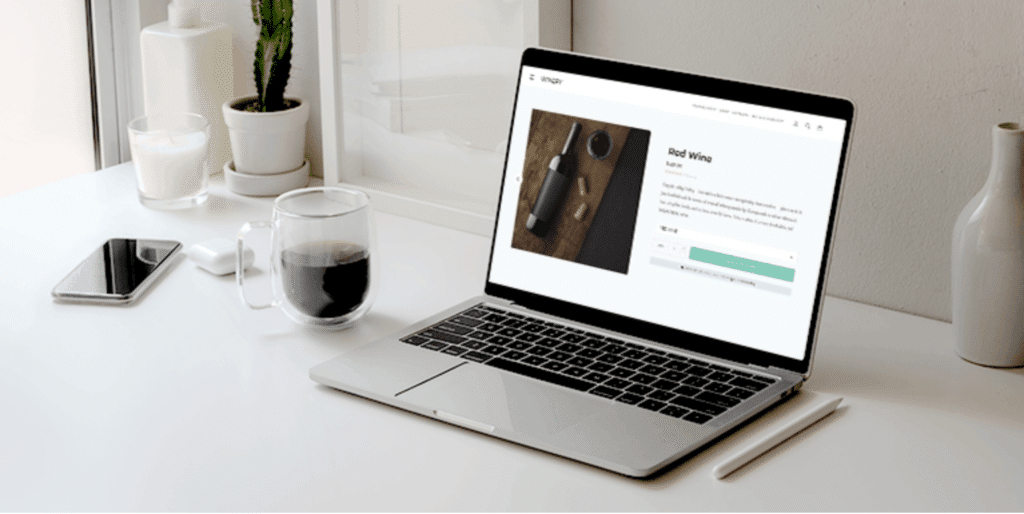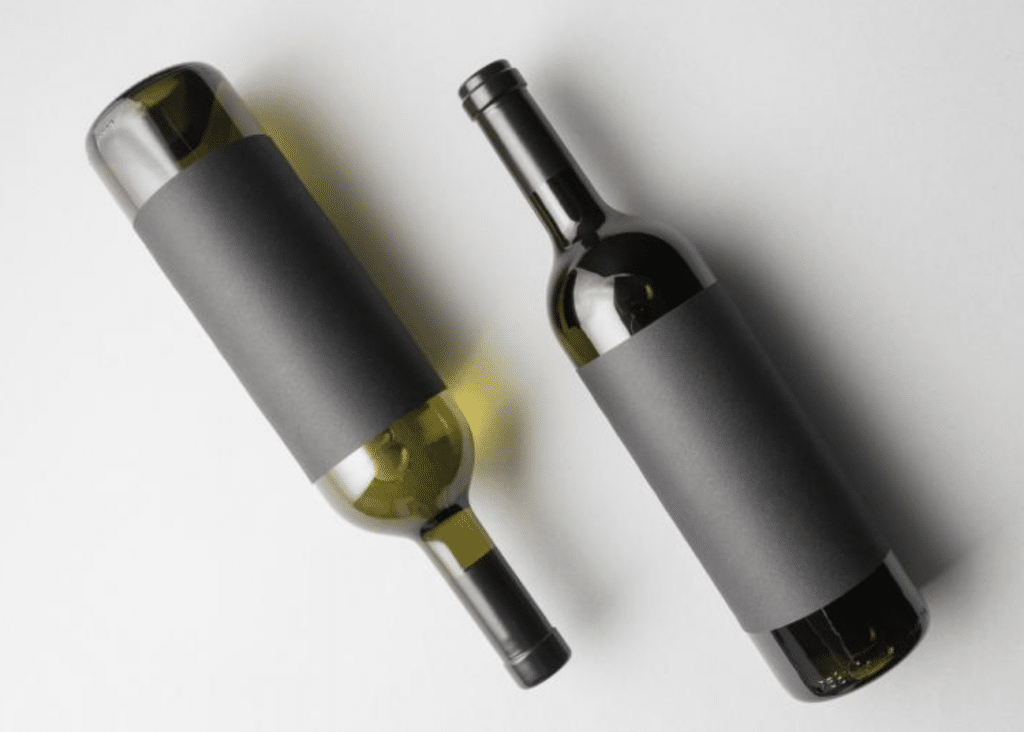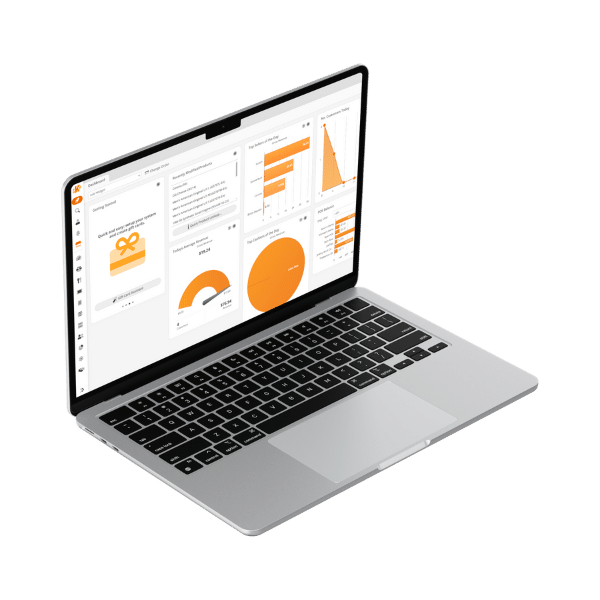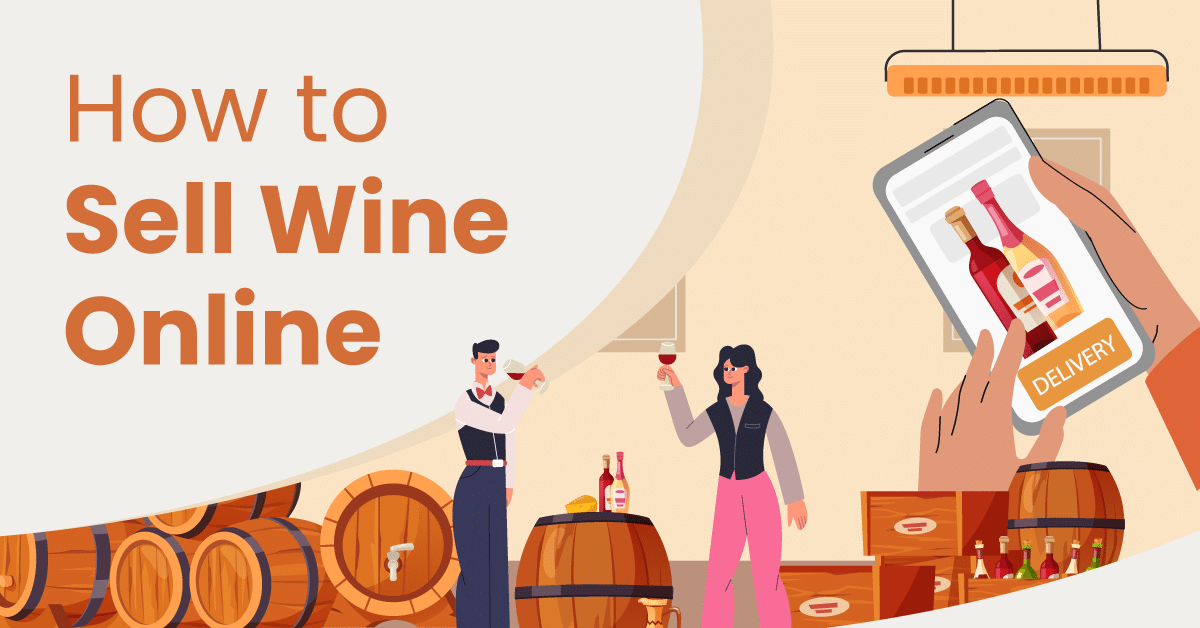
Selling wine online may be tricky, but it opens new opportunities for wineries to reach their customers directly. The online wine marketplace has exploded in recent years as more consumers get comfortable purchasing wine online, often through wine clubs. And wineries and wine retailers who adapt to this shift by establishing great online shops stand to tap into sizable new revenue streams and growth.
But doing so is far different from selling wine at a brick-and-mortar location. You’ve got regulations to follow, shipping logistics to figure out, and marketing strategies to develop. Still, selling wine online is completely achievable.
This guide will explore the ins and outs of successfully selling wine through online channels. We’ll analyze the state of the market, legal obligations, building your eCommerce presence, fulfillment logistics, marketing best practices, and customer service essentials. Whether launching a new online wine shop or looking to improve an existing one, this resource provides actionable insights and strategies. Let’s dive in!
Understanding the Online Wine Market
The Size and Potential of the Online Wine Market
Selling wine online is extremely attractive, given the market’s surging growth.
- In the US, eCommerce wine sales hit $6 billion in 2021.
- In 2022, the wine market’s online revenue exceeded $261 billion, and it is projected to increase by over 10% annually from 2022 to 2025.
- According to IWSR, the global wine eCommerce market value will reach $42 billion by 2024.
- By 2023, around 45% of all legal drinkers under 80 are expected to be Millennials, the biggest consumers of online wine orders. And by 2030, this number is predicted to rise to 54%.
- The wine eCommerce industry in the US is growing at an average rate of about 20% per year.
Younger generations are typically bigger online wine purchasers. This momentum is projected to continue in the years ahead as eCommerce wine purchasing gains mainstream traction.
Plus, the scale of online audiences is what makes eCommerce one of the most profitable types of businesses. Savvy wineries and retailers establishing an early digital presence are well-positioned to ride this wave.
Key Trends Shaping Online Wine Sales
Several evolving consumer trends are driving the growth of the online wine sector:
- Post-pandemic trends – When the pandemic hit, nearly half of all Americans bought wine and alcohol online for the first time.
- Younger generations – Millennials and Gen Z lead the charge in online wine spending and expect tech-forward experiences.
- Personalization – Consumers seek customized recommendations and tailored offerings just for them.
- Subscriptions – Wine clubs for recurring delivery offer stickiness and predictable revenues.
- Convenience – Online wine sales cater to busy lifestyles with fast shipping and simplicity.
Understanding Your Target Audience
Selling wine online starts with knowing your target audience very well. And not all wine drinkers leap into online purchasing equally. So clearly defining your target consumer demographic and psychographic profiles is critical to resonating with marketing and experiences.
Below are a few consumer profiles that typically make online wine orders:
- Busy young professionals who value mobile-friendly simplicity and convenience
- Adventurous millennials seeking to discover new, interesting wines
- Wealthy collectors interested in rare, prestige stock and white-glove service
- Budget-conscious customers who leverage online for better prices
The 2019 US Wine Market Council report says that nearly half of all people old enough to drink wine do so. Among them, 14% enjoy wine more than once a week, and 35% drink it occasionally. More women (54%) buy wine than men (46%). Also, the two groups that buy the most wine are baby boomers and millennials, each making up 34% of the market.
Competition in the Online Wine Marketplace

The eCommerce wine sector brings a diverse range of competitors:
- Mass online retailers boast a huge selection but impersonal experiences
- DTC-focused wineries selling first-party wines direct to consumers
- Local shops complementing brick-and-mortar with eCommerce
- The convenience of Amazon
- Flash sales or private label sites with significant discounts
Analyze the strengths and weaknesses of other players to craft differentiation strategies fitting your winery.
Legal Considerations for Selling Wine Online
Licensing and Regulations
Selling alcohol online introduces additional legal and compliance complexity. Navigating this patchwork of federal and state laws is crucial. Most states require wineries to obtain the following:
- Retailer or seller licenses to facilitate warehousing and sales
- Common carrier permits for using approved shipping carriers
- Excise tax registration for remitting wine taxes
Consult your state’s alcohol control authority to identify and secure legal licensing before selling online.
Age Verification Requirements
Rigorous age verification is essential when selling wine online to prevent underage sales. Follow basic best practices:
- Collecting customer’s date of birth at checkout and validating against public records
- Using an adult signature upon delivery to re-verify the age
- Only shipping to states where you hold required permits
- Integrate compliant age verification into your checkout process to minimize legal risks.
Understanding Shipping Laws
Wine shipping laws vary enormously across different states and localities:
- Obtaining licenses to accept and fulfill orders
- Shipping only to addresses in states where you are licensed
- Collecting and remitting destination state excise and sales taxes
- Using approved licensed carriers like FedEx or UPS
- Adhering to shipping laws prevents legal action or product seizures
Resources like the WSWA’s Compliance Toolkits are invaluable for mastering the nuances.
Setting Up Your Online Wine Shop
Choosing an eCommerce Platform
One of the first steps in launching your online wine store is selecting the right POS eCommerce software:
- Features to support wine selling needs – inventory, shipping, clubs, etc.
- Ease of ongoing use for updating products and content
- Scalability to support your sales growth
- Costs – subscriptions, transaction fees, etc.
- Design flexibility – themes, customization, branding options
With proper configuration and setup, leading options like Shopify, Wix, and WooCommerce can all enable excellent wine eCommerce experiences. There are also niche wine tech platforms specifically for direct-to-consumer sales.
Building an Appealing, User-Friendly Website
With a platform selected, designing an exceptional website is critical. Ensure your online shop does the following:
- Offers an intuitive, easy-to-navigate information architecture and layout
- Quickly and seamlessly loads across desktop and mobile
- Showcases enticing lifestyle imagery bringing your winery to life
- Communicates your brand story, logo, and value proposition
- Makes browsing wines and making purchases extremely simple
- Optimizes both visual appeal and conversion performance
High-Quality Product Photos and Descriptions

Rich product photography, tasting notes, and wine details are vital for engaging customers online. For your online shop, provide the following:
- Professional, high-res bottle and label images showing color
- In-depth tasting notes, flavor profiles, and food pairings
- Vivid descriptions sharing your winemaking story and philosophies
- Technical specifications – varietals, vintage, appellation, ABV, etc.
- Premium lifestyle imagery connecting wines with experiences
This sensory content makes customers feel connected with your offerings.
Accepting Diverse Payment Methods
Offer customers varied payment options:
- Major credit cards – Visa, Mastercard, American Express
- Digital wallets – Apple Pay, Google Pay
- Debit cards and payment apps – PayPal, Venmo
- Buy now pay later financing – Affirm, Quadpay
- Store credit or gift cards
Frictionless payments, especially via mobile, enable seamless checkouts. And one of the biggest hurdles for eCommerce sales is frustrating multi-step checkouts.
Managing Inventory
Keeping inventory synchronized in real-time across online and physical stores is imperative. Using specialized winery inventory management tools like KORONA POS helps integrate with eCommerce platforms to better control inventory:
- Update quantities as orders come in and stock is received
- Create purchase orders and manage fulfillment workflows
- Provide inventory visibility across locations to avoid overselling
- Automate reordering based on par levels
Note: Choosing your point of sale software is important to manage your physical and online wine stores.
KORONA POS is a cloud-based system well-suited for businesses that want to manage their eCommerce and physical stores. The software offers several features that make it easy to manage both channels:
eCommerce integration: KORONA POS integrates with WooCommerce, making it easy to sync your product inventory, orders, and customer data between your online and offline stores.
Real-time inventory tracking: The solution keeps track of your inventory in real-time, so you always know what products are available in both your physical and online stores.
Multi-channel sales: KORONA POS allows you to accept payments from various channels, including in-store, online, and over the phone.
Reporting and analytics: The point of sale software provides comprehensive reporting and analytics that you can use to track your sales performance across all channels.

Speak with a product specialist and learn what KORONA POS can do for your business.
Pricing and Shipping Your Wine
Setting Prices
When pricing wines for your online shop, think about these strategies:
- Researching competitor pricing for benchmarking
- Considering slightly lower prices online to drive interest
- Factoring in fulfillment and shipping costs
- Offering tiered pricing – reserve wines at higher price points
- Running promotions or limited-time sales to spark interest
Continuously evaluate pricing using sales data and analytics software to maximize profit.
Understanding Shipping Regulations
Key ground rules when arranging wine shipping are important, too:
- Using carriers with licenses to transport alcohol
- Complying with a state-by-state permit, tax, and adult signature requirements
- Only shipping to addresses permitted by your licenses
- Leveraging shipping software to remain compliant
Resources like Sovos and ShipCompliant help navigate requirements. Violating shipping laws risks financial or legal consequences.
Choosing Reliable Shipping Partners
Popular approved carriers include FedEx and UPS, but think about these factors:
- Licensing for alcohol shipping in your markets
- Reliability and customer service reputation
- Delivery speed options – express vs. ground
- Tracking visibility into shipments
- Insurance and protection options
- Overall rates for average package weights
Reliable carriers ensure that you’re following all major compliance laws and that shipments arrive intact and on time.
Communicating Shipping Policies and Details
Prominently share shipping and delivery specifics:
- Order processing and handling times
- Expected transit timeframes to customer locations
- Shipping rates
- Adult signature collection needs upon arrival
- Procedures for returns or refunds due to damage
Setting clear expectations upfront provides transparency for customers.
Digital Marketing Your Online Wine Shop
Optimizing for SEO
Employ SEO best practices so customers easily find your wines:
- Place relevant keywords on pages – winery name, varieties, region
- Create location-specific content optimized for searches
- Improve site speed, mobile experience, and crawlability
- Build high-quality backlinks from industry websites
- Monitor performance in Search Console to identify opportunities
Higher SEO visibility means more organic traffic and conversions.
Leveraging Social Media
Promoting your online wine selection on key social platforms is highly effective:
- Engaging social followers with rich photos, videos, and updates
- Sharing winemaking, vineyard, and product highlight posts
- Running contests, giveaways, and exclusive offers
- Collaborating with influencers on virtual tastings
- Promoting new releases and offerings via social ads
Facebook, Instagram, and TikTok provide prime opportunities to attract customers.
Email Marketing
Email enables targeted, automated marketing to subscribers. Follow standard best practices:
- Send cart abandonment and browse abandoned emails
- Promote new arrivals, limited quantities, and sales
- Provide exclusive subscriber-only deals and discounts
- Deliver wine pairing inspiration and seasonal recipe ideas
- Send personalized recommendations based on past purchases
Nurturing subscribers via email turns them into loyal customers.
Influencer and Blogger Partnerships
Working with influencers provides valuable endorsements and exposure:
- Send product samples to popular wine accounts for reviews
- Sponsor or provide wine for influencer virtual tastings
- Collaborate on co-branded social contests or giveaways
- Invite influencers to your winery for immersive visits
- Guest post on blogs sharing your winemaking story
The right partnerships expand your brand and credibility.
Investing in Paid Advertising
Completing your digital marketing mix, run some paid advertising:
- Serve search ads on Google to capture consumers actively searching
- Reach broader audiences through Facebook and Instagram ads
- Retarget visitors who left your online store
- Run audio ads on wine podcasts and live online events
- Advertise in native ad spaces on publications popular with wine lovers
Continuously test and optimize paid approaches for maximum ROI.
Customer Service and Retention Strategies
Providing Standout Ecommerce Customer Experiences
In the impersonal world of online wine sales, stellar customer service is how you stand apart:
- Fast, personalized responses to inquiries and feedback
- Surprise discounts or gifts for loyal club members
- Live chat assistance while shopping in your online store
- Curated recommendations based on purchase and rating history
- Personal outreach explaining new releases or shipments
- Handwritten notes and special packaging touches
Customer service shows you care about every wine lover who supports your winery.
Offering Customer Loyalty Programs
Special programs give customers incentives to purchase again:
- Wine club subscriptions for recurring shipments
- Points earned per dollar spent, redeemable for rewards
- Free shipping when order minimums are met
- Exclusive member events like virtual tastings
- Referral rewards when existing customers invite others
Loyalty programs increase lifetime value and order frequency.
Managing Negative Reviews and Feedback
Despite best efforts, negative feedback can still arise when selling online:
- Monitor reviews across platforms to respond promptly
- Address concerns professionally and rectify issues if possible
- Follow up to transform complaints into satisfied resolutions
- Take constructive feedback into account when evaluating policies and processes
- Focus on the many positive reviews and continually improving
Customer-centric mindsets turn problems into opportunities to improve.
Sell Wine Effectively Online
Selling wine through eCommerce opens up major new potential but requires attention. Start by intimately understanding your target wine consumer. Build an exceptional branded website focused on showcasing your wines and streamlining purchases. Handle fulfillment and shipping with great care. Let your passion for wine shine through in your digital experiences. Leverage this guide to share your vintages with wine lovers nearby.
FAQs: Selling Wine Online
There are a few ways to sell a bottle of wine online. You can sell it through an online auction house, a wine retailer, or a peer-to-peer platform. You can also sell it directly to consumers through your own website or social media.
According to a 2022 report by Wines & Vines, 42% of wine consumers in the United States have purchased wine online in the past year. This number is expected to grow in the coming years.
Yes, people do buy wine online. The online wine market is growing rapidly. Wine eCommerce sales reached $6 billion in 2021, an increase of 131% compared to 2020. In 2021-2022, online wine sales increased by 4%, while in 2020, they only increased by 2%.
There are a few ways to sell your wine portfolio. You can sell it through an online auction house, a wine retailer, or a peer-to-peer platform. You can also sell it directly to consumers through your own website or social media.












